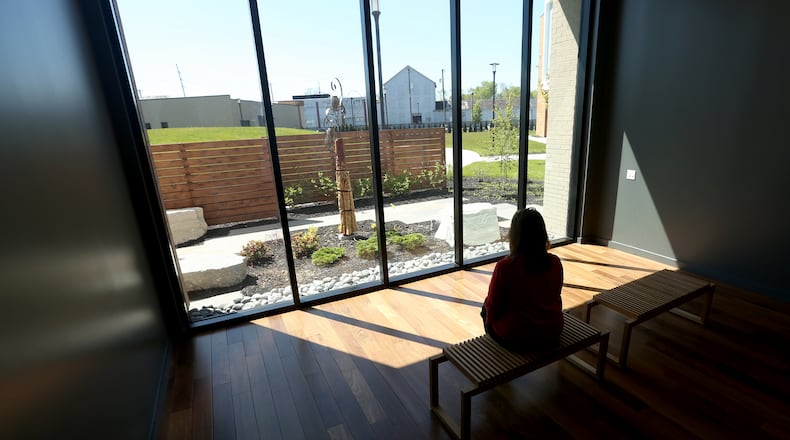OneFifteen is working on a project called Houses of Hope that it says will offer safe, stable, affordable and well-maintained housing for patients, said Barbara Marsh, OneFifteen’s chief operating officer.
“Each resident will be surrounded with wrap-around services that will support those individuals as they move through their recovery journey,” she said.
OneFifteen was founded by Google’s sister company, Verily, which is described as a “life sciences company.”
The nonprofit has a 4.5-acre campus located at 257 Hopeland St. in Dayton’s Carillon neighborhood.
Credit:
Credit:
The group’s operating partners are Samaritan Behavioral Health Inc. and RI International, and together they operate a “full continuum” of substance use disorder treatment services.
OneFifteen plans to build two new “supportive” residential housing units just blocks from its campus. The first one will be on vacant land at 413 and 415 Hopeland St.
The nonprofit is working with the Montgomery County Land Bank to try to identify other blighted properties in the Carillon neighborhood for the second structure, as well as for future housing development, officials said.
“This area continues to suffer long-standing economic and social inequities so we’re really excited to be supporting the community and revitalization,” Marsh said.
The city of Dayton recently approved giving OneFifteen $380,000 of its federal COVID rescue funds for the project.
The funding will be used for planning, architectural design work, land development and preliminary construction costs, Marsh said.
OneFifteen will invest $580,000 into the Houses of Hope Project, with $200,000 coming from Verily.
The Hopeland Street campus has intensive and non-intensive outpatient treatment, including therapy services, plus low-intensity residential services, which is around-the-clock support.
Crisis stabilization and inpatient residential treatment services are available at 707 South Edwin C. Moses Blvd.
OneFifteen says it seeks to help people 18 and older living with substance use and co-occurring disorders make a full and sustained recovery.
About the Author




